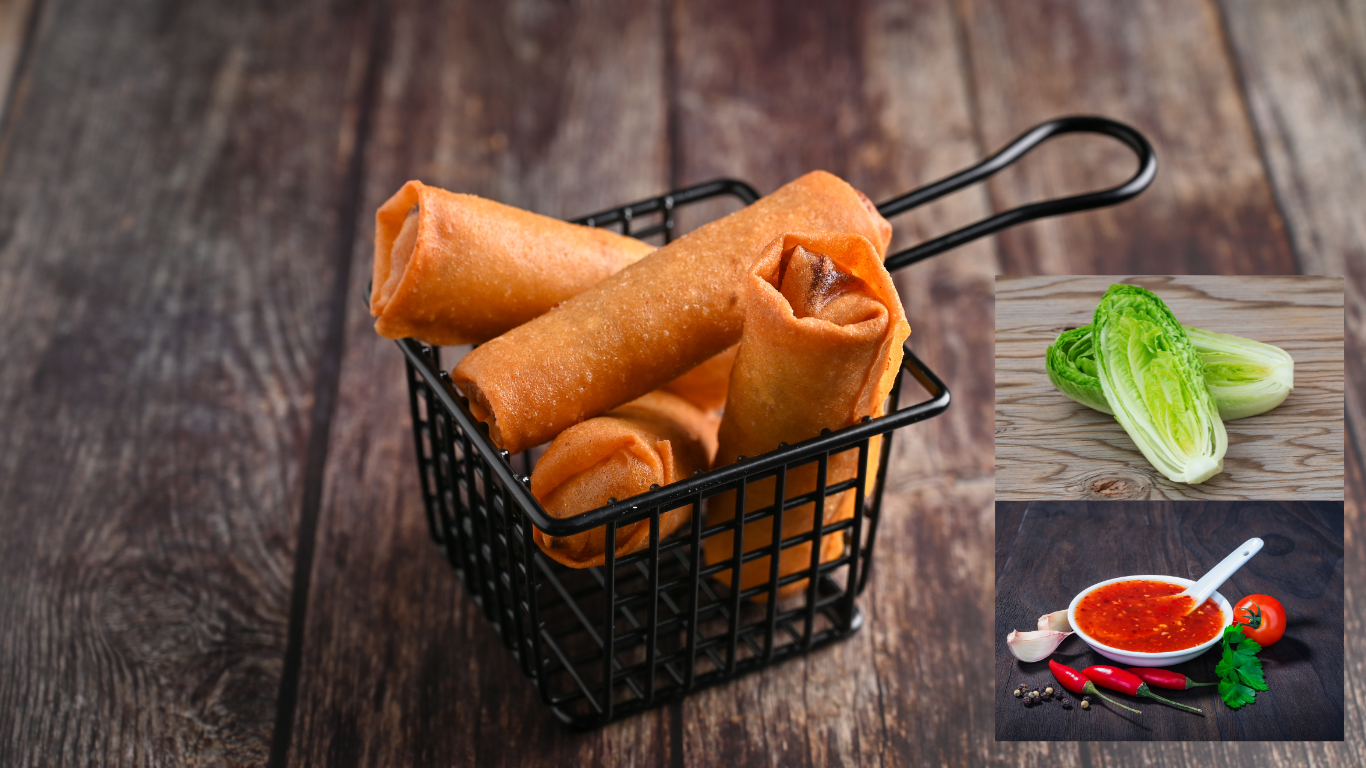Spring rolls are a popular dish in many Asian cuisines, known for their crispiness and versatility. Whether served as a snack, appetizer, or light meal, veggie spring rolls are a delightful way to enjoy fresh vegetables wrapped in delicate rice paper. In this article, we will explore everything you need to know about making veggie spring rolls, from choosing the right ingredients to mastering the rolling technique.
Table of Contents:
- Introduction to Veggie Spring Rolls
- History of Spring Rolls
- Choosing the Right Ingredients
- 3.1 Vegetables
- 3.2 Herbs
- 3.3 Dipping Sauces
- Equipment Needed
- Step-by-Step Recipe
- 5.1 Preparing the Ingredients
- 5.2 Rolling the Spring Rolls
- 5.3 Cooking Methods
- Serving Suggestions
- Nutritional Information
- Conclusion
- FAQs
1. Introduction to Veggie Spring Rolls.
Veggie spring rolls are an excellent option for those looking to add more vegetables to their diet. They are light, refreshing, and can be customized according to personal preferences. With their vibrant colors and crunchy textures, these rolls are not only delicious but also visually appealing.
2. History of Spring Rolls.
Spring rolls have a rich history that dates back centuries. Originating in China, they were traditionally eaten during the Spring Festival as a way to welcome the new season. Over time, the concept of the spring roll spread throughout Asia, with variations emerging in Vietnam, Thailand, and beyond. Today, they are enjoyed worldwide, often filled with an array of ingredients beyond the traditional meat and vegetables.
3. Choosing the Right Ingredients:
3.1 Vegetables.
The beauty of veggie spring rolls lies in their versatility. You can use a variety of vegetables, including:
- Carrots: Julienned or grated for a sweet crunch.
- Cabbage: Shredded, either green or purple, adds texture and color.
- Bell Peppers: Thinly sliced for sweetness and crunch.
- Cucumbers: Julienne or thinly sliced for a refreshing bite.
- Bean Sprouts: Crunchy and slightly nutty.
- Avocado: Creamy and rich, adding depth to the rolls.
3.2 Herbs
Fresh herbs can elevate the flavor of your spring rolls. Consider adding:
- Mint: Bright and refreshing.
- Cilantro: Earthy and aromatic.
- Basil: Sweet and slightly peppery.
3.3 Dipping Sauces
A great dipping sauce can make or break your spring rolls. Popular options include:
- Peanut Sauce: Creamy and nutty, made with peanut butter, soy sauce, and lime juice.
- Sweet Chili Sauce: A perfect balance of sweet and spicy.
- Soy Sauce: A classic and simple option.
- Hoisin Sauce: Rich and slightly sweet, often used in Asian dishes.
4. Equipment Needed.
To make veggie spring rolls, you will need:
- A large bowl for soaking rice paper.
- A cutting board and knife for chopping vegetables.
- A clean, flat surface for rolling.
- Optional: A frying pan or deep fryer if you plan to fry your rolls.
5. Step by Step Recipe:
5.1 Preparing the Ingredients.
- Wash and Slice Vegetables: Rinse all vegetables thoroughly. Use a sharp knife to julienne or thinly slice the vegetables you’ve chosen.
- Prepare Herbs: Rinse fresh herbs under cold water and pat them dry with a paper towel.
- Make Dipping Sauce: Choose one of your favorite dipping sauces or prepare a simple soy sauce blend with a splash of rice vinegar and sesame oil.
5.2 Rolling the Spring Rolls.
- Soak Rice Paper: Fill a large bowl with warm water. Dip one rice paper sheet in the water for about 10-15 seconds until it becomes pliable.
- Lay on Surface: Place the soaked rice paper on a clean, flat surface.
- Add Filling: In the center of the rice paper, add a small handful of your prepared vegetables and herbs.
- Roll: Fold the bottom of the rice paper over the filling, then fold in the sides. Roll tightly until the spring roll is sealed. Repeat with remaining sheets and filling.
5.3 Cooking Methods.
Veggie spring rolls can be enjoyed fresh or cooked. Here are two popular methods:
- Fresh: Serve the spring rolls as is, accompanied by dipping sauce.
- Fried: Heat oil in a frying pan over medium heat. Carefully place the spring rolls in the hot oil and fry until golden brown on all sides. Drain on paper towels before serving.
6. Serving Suggestions.
Veggie spring rolls are best served fresh, but they can also be made ahead of time for parties or meal prep. Arrange the rolls on a platter with small bowls of dipping sauce for a beautiful presentation. Consider pairing your spring rolls with other Asian inspired dishes, such as dumplings or a light noodle salad.
7. Nutritional Information.
Veggie spring rolls are a healthy option packed with vitamins and minerals. They are low in calories and high in fiber, making them a great choice for those looking to maintain a balanced diet. The exact nutritional content will depend on the specific vegetables and sauces used, but they generally provide:
- High fiber content
- Low fat (especially if not fried)
- Rich in vitamins A and C from vegetables
Conclusion
Making veggie spring rolls is a fun and rewarding culinary adventure. With a variety of fresh ingredients and dipping sauces, you can create a dish that suits your taste buds perfectly. Whether you enjoy them fresh or fried, veggie spring rolls are an excellent way to incorporate more vegetables into your diet while impressing your family and friends with your culinary skills.
Question And Answer’s:
Q1: Can I make veggie spring rolls ahead of time?
A1: Yes! You can prepare the filling and roll the spring rolls a few hours in advance. Just keep them covered with a damp paper towel to prevent them from drying out.
Q2: What other fillings can I use?
A2: You can get creative with fillings! Consider using cooked shrimp, tofu, or even fruits like mango for a sweet twist.
Q3: Can I freeze veggie spring rolls?
A3: It is not recommended to freeze fresh spring rolls, as the rice paper can become tough. However, you can freeze fried spring rolls. Just ensure they are properly cooled and stored in an airtight container.
Q4: What type of rice paper should I use?
A4: Look for traditional Vietnamese rice paper, often labeled as “banh trang.” They come in various sizes, typically 8 to 10 inches in diameter.
Q5: How do I prevent my spring rolls from sticking together?
A5: To prevent sticking, make sure the rice paper is well soaked but not overly wet, and store the finished rolls in a single layer on a plate, covered with a damp cloth. If you need to stack them, place parchment paper between the layers.With this comprehensive guide, you’re now ready to create delicious veggie spring rolls that will impress your guests and delight your taste buds. Enjoy the process, and happy rolling!

